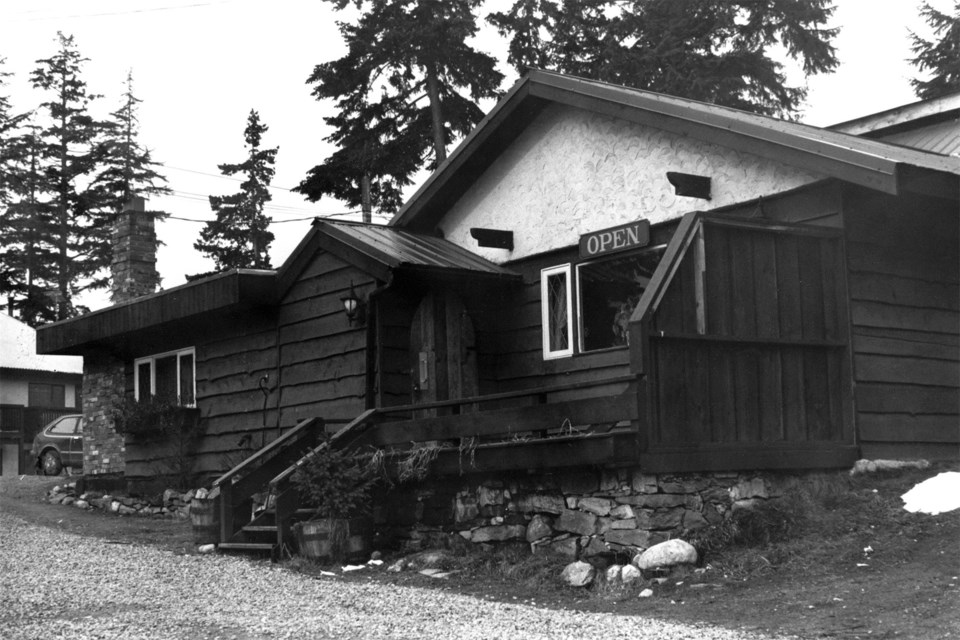In Whistler today you have your pick of restaurants catering to all tastes, including many fine-dining options. Unsurprisingly, the options were more limited in 1970, when Rudi and Merrilyn Hoffmann’s Mountain Holm Steakhouse opened at Nesters. Later known simply as Rudi’s Steakhouse, it was an instant favourite among Whistlerites, often requiring reservations weeks in advance.
Rudi had trained as a chef in his home country of Germany and got his start in Whistler in 1969, working as the head chef at the Christiana Inn on Alta Lake.
“When I was at the Christiana, I quadrupled the turnover. I was just serving different food than they were used to,” Rudi said in an interview with the Whistler Question.
“In those days, the general fare in ski areas was hotdogs, hamburgers, chili.”
At the time, the Christiana Inn and Le Après were the main restaurants in Whistler. Seeing that there was a market in Whistler for finer dining, Rudi set out to start his own restaurant. He purchased Tony’s Hamburger Heaven, a late-night eatery running out of a former Pacific Great Eastern Railway tool shed, and the rest is history.
With appetizers including escargot, goose liver pate, prawns and scallops (“Coquilles Saint Jacques a la Parisienne”) all for under $6 a dish, flipping through a menu is likely to make anyone long for restaurant prices from 1986 as their mouth begins to water (and when Rudi first opened in 1970, the prices were even lower). The main dishes include additional information to help diners choose. The 8-oz. Filet Mignon Par Excellence includes the claim, “You can cut it with a fork!”
With loyal customers returning again and again, Rudi’s became the venue of choice for wining and dining. Franz Wilhelmsen, president and founder of Garibaldi Lift Co., could often be spotted in the Steakhouse. He did not hold back his praise for Rudi’s, saying, “I don’t think I ever had better food anywhere in the whole world.”
It was a regular venue for events, including the weekly Rotary Club meetings and birthdays, and the restaurant would hold an annual traditional European Christmas Dinner on Christmas Eve, featuring goose, dumplings and homemade Christmas pudding.
The glowing reviews were global. According to the August 1972 issue of Ski Magazine, “while Whistler’s nightlife would rate three on a one-to-one-hundred scale, its feeding potential would rate about 92. The main reason is the Mountain Holm Steakhouse, known as Rudi’s because of its bearded proprietor, a master chef from Germany. Rustic, warm, personal; magnificent beef for $6.”
To cater to the demand, Rudi’s was renovated in 1974 to expand the lower seating area and increase the kitchen space, yet the 60-seat restaurant still filled up.
It has been argued that Rudi’s was more about dessert than dinner.
“Rudi wasn’t famous for steak, he was famous for strudel. That was his undoing,” said former local Bob Penner in an oral history interview.
“The strudel came off of Rudi’s strudel press on Thursdays, and anyone who knew anything in the Valley was lining up on Thursdays to buy Rudi’s strudel. Rudi believed to have a good strudel you had to be able to read a newspaper through it and if it had any breaks he went into an absolute tirade.”
Despite the rave reviews, Rudi was unsuccessful selling the restaurant in 1977, and instead leased the building. This led to a revolving door of restaurants in the space—including Vallee Blanche, Madame’s, and Le Chalet. Eventually, Rudi’s opened back up in 1984 to the excitement of Whistler locals, however, the changing times were hard on Rudi’s Steakhouse. The new town centre kept tourists in Whistler Village and increased competition, and the downturn in the economy meant fewer people were eating out. Rudi’s closed for good in 1986, but is still remembered fondly throughout the community.




